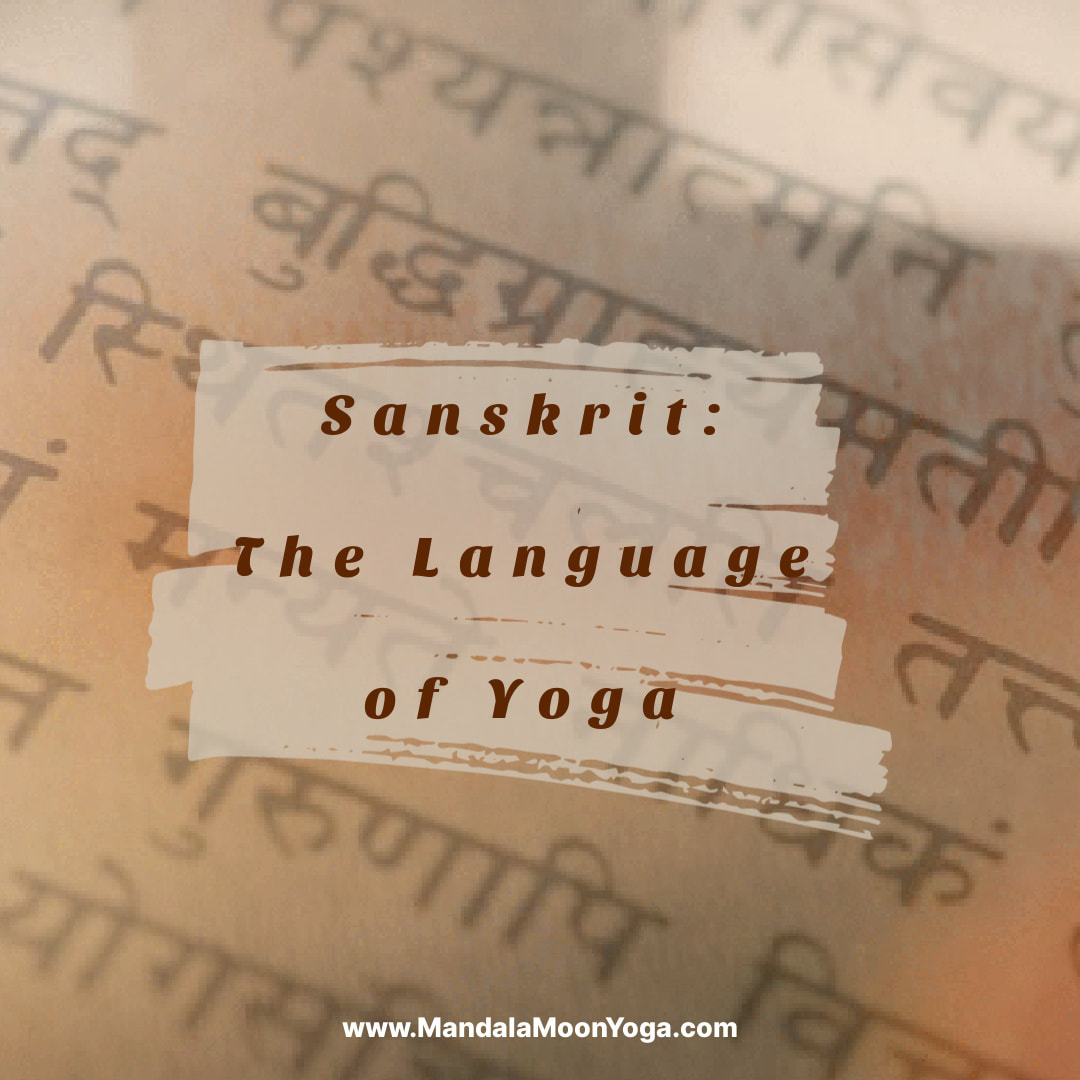You want more flexibility or some stress relief, so you decide to try yoga. You’re thinking it will be similar to any other fitness class at the gym, perhaps. Then the teacher starts talking about “pranayama” or “tadasana” or “nadis”, and you look around to see if other people are as confused as you.
Sanskrit is the language of yoga and many other philosophies and disciplines, such as Ayurveda and Tantra. Yoga is an ancient practice, and Sanskrit is an ancient language, even older than Latin. The written version of Sanskrit is at least 3,500 years old, and the oral tradition is much older.
When you practice, or “study,” yoga, you will undoubtedly be exposed to at least a few Sanskrit words. The word Yoga itself, is, in fact, Sanskrit. Here’s a beginner’s guide to some of the terms you are most likely to encounter in Yoga class. Once you hear them a few times, they won’t seem so intimidating!
Yoga - from the root “yuj” meaning yoke or connect. Often interpreted as the “union” of mind, body, and spirit.
Asana - most literally translated as “seat.” In ancient times, yoga postures were limited to seated meditation postures. In contemporary use, asana refers to any of the poses or postures. Note that asana is usually a suffix. For instance, tadasana is tada (mountain) plus asana (pose); mountain pose.
Prana - life force energy; the energy that animates our physical bodies.
Om (or AUM) - is a sacred sound often chanted at the beginning and/or end of class. It is said to resonate at the vibration of the universe and represents the sound of creation.
Mantra - a word or phrase recited, usually during meditation, to help focus the mind.
Dharma - refers to one’s path, purpose, or duty in life.
Karma - Karma is more involved than the “what comes around goes around” or “Karma is a b*&^%” meaning we often hear. Karma is more about the energy that corresponds to our actions. It is believed that our actions influence our circumstances in our current lifetime as well as in future lifetimes.
Mudra - literally “seal” or “symbol,” and typically used to refer to hand positions or, less often, full body positions that are used to direct prana or focus one’s attention.
Bandha - literally “lock” or “bond,” refers to internal energetic and muscular locks. There are three main bandhas. Mula bandha is the root lock, created by lifting and contracting the pelvic floor muscles; uddiyana bandha is pulling the abdominal muscles in and up; and jalandhara bandha is the throat lock. Maha bandha (the great lock) is when all three are locked simultaneously.
Namaste - a respectful greeting. “I bow to you.” Usually accompanied by Anjali/Namaste mudra (hands together at the heart in a prayer-like position).
Ashtanga - literally “eight-limbed” and in classical yoga, used in reference to the eight limbs of yoga:
- Yama (moral discipline)
- Niyama (self-restraint)
- Asana (posture)
- Pranayama (breath/energy control)
- Pratyahara (sense withdrawal)
- Dharana (focus/concentration)
- Dhyana (flow state/meditation)
- Samadhi (pure awareness/bliss)
Sutra - like “suture,” meaning thread. The Yoga Sutras of Patanjali is a classic yoga text, full of aphorisms or “threads” of information that encompass the foundational philosophy of yoga.
Nadi - energy channel
Shanti - peace
Bhakti - one of the paths to yoga (union); the path of devotion
Japa - to mutter
Mala - garland, usually referring to to a strand of 108 beads strung together to use for mantra meditation
Citta - the mind or consciousness
Vritti - fluctuations
Drishti - focal point
Chakra - wheel of energy
Kirtan - call and response style of chanting or singing as a practice of devotion.
Karuna - compassion
Watch for another Sanskrit post with words to help decipher pose names.


 RSS Feed
RSS Feed